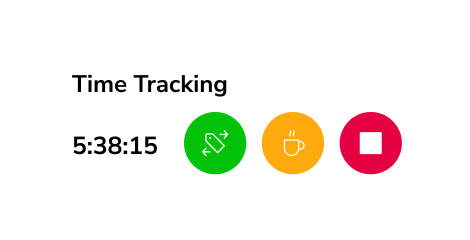
Photo by Wyron A on Unsplash
Background
A dining establishment focused on Japanese cuisine, with numerous locations across Malaysia.
The establishment utilizes carefully sourced ingredients, some imported from select regions, providing affordable and high-quality dishes.
The brand is poised for growth, with plans to expand to new locations.
For confidentiality reasons, the company name is not disclosed.
Challenges with the Old System That Made the Company Change
The Company’s nature of work calls for the need to manage various employees scheduled, across locations. Coupled with a range of other factors, this complexity gives rise to several significant challenges in managing attendance, including:
* Lack of Flexibility for Managing Part-Time and Full-Time Employees:
The company employs both part-time and full-time staff, each with different working hour requirements and expectations. The old system was not flexible enough to handle the varied scheduling needs of both groups, resulting in challenges when tracking hours worked and benefits accrued. A modern time tracking solution with customized rules for part-time and full-time employees, as well as flexible scheduling features, would help effectively manage the unique needs of both employee groups.
* Inefficient Shift Scheduling for Multiple Locations:
With multiple outlets across various locations, the company struggled with scheduling staff across different shifts and locations. The old system made it difficult to manage employee availability, request time off, and accommodate shift preferences. A modern system with centralized scheduling and real-time availability tracking would help managers create optimized schedules, reducing scheduling conflicts and improving staff coverage, especially during peak hours.
* Inability to Track and Manage Overtime Efficiently:
The company often experiences fluctuations in customer traffic, especially during peak meal hours or special promotions, requiring staff to work overtime. The old time tracking system didn’t flag overtime hours or calculate them correctly, leading to confusion and potential payroll errors.
The Company’s Time Tracking Key Requirements
The company had several critical requirements for a time tracking solution to address the complexities of its operations, ensuring seamless integration and operational efficiency. These key requirements included:
- Customizable Schedule Expectations – Ability to specify the weekly hours and shifts for various groups of employees.
- Location Confirmation – Ability to ensure employees are in the location they are meant to be in through features such as Geofencing.
- Mobile Time Tracking – Field and store employees can easily clock in/out using mobile devices.
- Real-Time Attendance Visibility – Transparency for managers about absences or tardiness.
- Employee Self-Service – Allow employees to manage schedules and request time off via app.
Why the Company Chose Jibble Time Tracking
When it came time to find a solution to track the team’s time, Jibble stood out as the perfect fit. Here’s why the company decided to integrate it into their workflow:
1# Location-Based Time Logging:
The company operates multiple restaurant locations, and accurate time tracking across all locations was a challenge. Jibble’s geofencing feature allowed employees to clock in only when they were physically at a designated location, ensuring precise time tracking for each restaurant. This minimized inaccuracies and increased accountability.
2# Mobile Clocking for Staff on the Go:
Many of the company’s employees work on the go, either preparing food or assisting customers at different parts of the restaurant. Jibble’s mobile app made it easy for staff to log in and out with just a few taps on their smartphones, reducing administrative time and improving operational efficiency.
3# Simple and User-Friendly Interface:
The company needed a time tracking system that would integrate smoothly with it’s current workforce. Jibble’s dashboard is simple to use for all employees and is well-equipped with automation features and a straightforward onboarding process to ensure a great user experience.

How Was the Onboarding Process?
The company’s onboarding process for Jibble was designed to accommodate their restaurant staff who worked in shifts. The process lasted 4 weeks, starting with system customization for their unique operational needs. The first two weeks were spent configuring Jibble’s time tracking system to ensure it met their requirements for shift-based work, with geofencing features added to track time accurately when employees arrived and left work.
The third week focused on employee training, especially for front-line staff who would use the mobile app to log hours. By the final week, Jibble was fully integrated with internal systems, and the company experienced a smoother and more accurate payroll process, leading to increased employee satisfaction and improved operational efficiency.
Following the onboarding, the company also requested for the setup of kiosks on certain locations, which was navigated with the assistance of the Jibble support team.
The Benefits Immediately Identified Post Onboarding
Following the onboarding process, the company quickly experienced several key benefits that significantly contributed to its sustainable improvement, including:
1. Improved Shift Coverage: Accurate time tracking allowed the company to optimize their staffing, ensuring enough workers during peak hours.
2. Faster Payroll Processing: Jibble’s integration with payroll helped automate the calculation of wages, speeding up payroll processing and reducing errors.
3. Simplified Time Tracking for Hourly Employees: The user-friendly app enabled hourly employees to easily track their shifts, reducing the administrative burden.
Main Method of Jibbling In and Out
The key methods for clocking in for the Company is through:
- Mobile App: The company uses the mobile app for easy clocking in and out at the beginning and end of shifts. For quick service staff, the system is optimized to ensure quick clock-ins and break times are logged accurately, while certain locations are equipped with geofencing login capabilities.
- Kiosk: Certain locations, through the setup of kiosk, allow for face recognition clock in through kiosks set up at the location.
Conclusion
The implementation of Jibble’s time tracking solution has greatly improved the operational efficiency of the dining establishment, addressing key challenges such as inaccurate attendance tracking, inefficient shift scheduling, and payroll integration.
The geofencing feature ensured precise location-based time logging across multiple restaurant locations, while the mobile app and kiosk enabled employees to clock in and out seamlessly, reducing administrative tasks. With Jibble’s integration with the payroll system, payroll processing became faster and more accurate, leading to increased employee satisfaction.
Overall, the company has seen optimized staffing, improved management, and a more streamlined approach to time tracking, supporting its continued growth and success across multiple locations.


